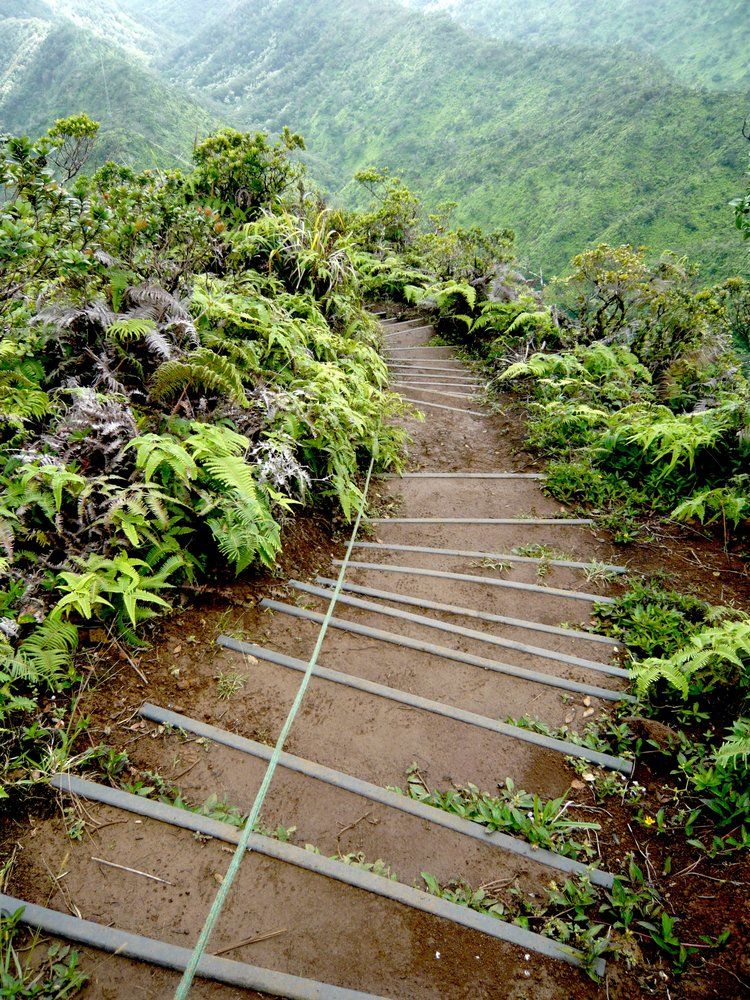Along the ridge top are the tall Cook pines planted by Territorial Forestry in 1927. Named after Captain James Cook, the pines are native to New Caledonia (Isle of Pines) in the South Pacific between Fiji and Australia. They are columnar in shape and have overlapping, scalelike leaves about 1/4 inch long, rather than true needles.
Near the road end native koa and `ohi`a trees begin to replace the guava and other introduced species. Koa has sickle-shaped foliage and pale yellow flower clusters. Early Hawaiians made surfboards and outrigger canoe hulls out of the beautiful red brown wood. Today it is made into fine furniture. `Ohi`a has oval leaves and clusters of delicate red flowers. Early Hawaiians used the flowers in lei (garlands) and the wood in outrigger canoes. The hard, durable wood was also carved into god images for heiau (religious sites).
Along the trail look for kopiko, a native member of the coffee family. It has leathery, oblong leaves with a light green midrib. Turn the leaf over to see a row of tiny holes (piko [navel]) on either side of the midrib. The kopiko produces clusters of little white flowers and fleshy, orange fruits.
Before the final climb listen for the Japanese bush warbler (uguisu), a bird often heard, but rarely seen. Its distinctive cry starts with a long whistle and then winds down in a series of notes. The bush warbler is olive brown on top with a white breast and a long tail. More readily seen is the `amakihi, the most common native forest bird on O`ahu. It is yellowish green with a slightly curved grey bill and feeds on nectar, fruits, and insects.
